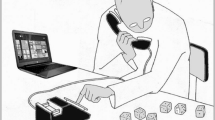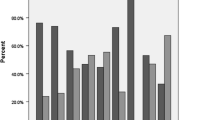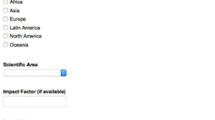There is no idea, though ancient and absurd, that could not enhance our understanding (by P. K. Feyerabend).
Abstract
For the most part, the “publish or perish” paradigm has inevitable implications on the quality of research published because the scientific results are evaluated by quantity and not by quality. The pressure for multiple publication results in creation of so-called predators journals acting without the required peer reviving. Moreover, the citation records of papers do not reflect duly their scientific quality enhancing mere quantity. The growth of sophisticated “push-and-button” apparatuses allows easier preparation of publications while facilitating ready-to-publish data. Articles can thus be compiled by mere combination of different measurements usually without idea what it all is about and to what purpose this may serve. Moreover, any deep-rooted theory which is contravening mainstream executions is not welcome because is breaking the effortless often long-established practice. While the number of publications is clearly a quantitative criterion, much hopes has been placed on citation, which promised to serve well as an adequate measure of the genuine scientific value, i.e., of quality of the scientific work. The impact factor is related to the van’t Hoff law of activity coefficient. The case of Russian publication policy and that of JTAC are particularly examined. JTAC is enlightened by providing basis for new fields of thermal material science which should be recognized as a yet missing impact.


Similar content being viewed by others
References
Šesták J. Citation records and some forgotten anniversaries in thermal analysis. J Therm Anal Calorim. 2012;108:511–8.
Šulcová P, Šesták J, Menyhárd A, Liptay G. Some historical aspects of thermal analysis on the mid-European territory. J Therm Anal Calorim. 2015;108:511–8.
Wendlandt WW. How Thermochimica Acta began: some reflections. Thermochim Acta. 1981;50:1–5.
Garfield E. What is the primordial reference for the phrase ‘publish or parish’? Scientist. 1996;10:11.
Fiala J, Šesták J. Databases in material science: contemporary state and future. J Therm Anal Calorim. 2000;60:1101–10.
Fiala J. Information flood: fiction and reality. Thermochim Acta. 1987;110:11–22.
Burnham JF. SCOPUS database: a review. Biomed Digit Libr. 2006;3:1.
Seglen PO. Why the impact factor of journals should not be used for evaluating research. Br Med J. 1997;314:498–502.
Adam D. Citation analysis: the counting house. Nature. 2002;415:726–9.
Scully C, Lodge H. Impact factors and their significance; overrated or misused? Br Dent J. 2005;198:391–3.
Lehmann S, Jackson AD, Lautrup BE. Measures for measures. Nature. 2006;444:1003–4.
Editorial, Papers about papers. Nat Nanotechnol. 2008;3:633.
Frey BS, Rost K. Do rankings reflect research quality? J Appl Ecol. 2010;13:1–38.
Editorial, Beware the impact factor, Nat Mater. 2013;12:89.
Editorial, Deciphering impact factors. Nat Neurosci. 2003;6:783.
Ylä-Herttuala S. From the impact factor to DORA and the scientific content of articles. Mol Ther. 2015;23:609.
http://scholarlyoa.com/individual-journals/ and Beall J. Criteria for determining predatory open-access publishers. http://scholarlyva.com/.
Garfield E. A new dimension in documentation through association of ideas. Science. 1955;122:108–11.
Johnson AA, Davis RB. The research productivity of academic materials scientists. J Met. 1975;27:28–9.
Roy R. Comments on citation study of materials science departments. J Met. 1976;28:29–30.
Mannchen W. Einführung in die Thermodynamik der Mischphasen. Leipzig: VEB Deutscher Verlag für Grundstoffindustrie; 1965.
Garfield E. Citation indexing—its theory and application in science, technology, and humanities. New York: Wiley; 1979 (ISBN 100471025593).
Garfield E. Perspective on citation analysis of scientists, Chapter 10 in E. Garfield. Citation indexing (above). New York: Wiley; 1979.
Cronin B, Atkins HB, editors. The web of knowledge. Medford: Information Today; 2000 (ISBN 1573870994).
Hirsch JE. An index to quantify an individual’s scientific research output. Proc Natl Acad Sci USA. 2005;102:16569–72.
Eghe L. Theory and practice of the g-index. Scientometrics. 2006;69:131–52.
Bornmann L, Mutz R, Hug SG, Daniel H-D. A multilevel meta-analysis of studies reporting correlations between the h-index and 37 different h-index variants. Informetrics. 2011;5:346–59.
Fiala J, Mareš JJ, Šesták J. Reflection on how to evaluate professional worth of scientific papers and their citation responding. Scientometrics. 2017 (submitted).
Šesták J, Holba P, Gavričev KS. Reinstatement of thermal analysis tradition in Russia and related East European interactions. J Therm Anal Calorim. 2015;119:779–84.
Šesták J. Is the original Kissinger equation obsolete today—not obsolete the entire non-isothermal kinetics? J Therm Anal Calorim. 2014;117:1173–7.
Ozawa T. Kinetic analysis of derivative curves in thermal analysis. J Thermal Anal. 1970;2:301–24.
Kissinger HE. Reaction kinetics in differential thermal analysis. Anal Chem. 1957;29:1702–6.
Holba P, Šesták J. Imperfections of Kissinger evaluation method and crystallization kinetics. Glass Phys Chem. 2014;40:486–95.
Holba P. Temperature dependence of activation energy of endothermic processes and related imperfections of non-isothermal kinetic evaluations. J Therm Anal. 2017. doi:10.1007/s10973-017-6088-8.
Augis JA, Bennet JE. Calculation of Avrami parameters for heterogeneous solid-state reactions using a modification of Kissinger method. J Therm Anal. 1978;13:283–92.
Reading M, Elliot D, Hill VL. A new approach to the calorimetric investigations of physical and chemical transitions. J Therm Anal Calorim. 1993;40:949–55.
Šesták J, Berggren G. Study of the kinetics of the mechanism of solid-state reactions at increasing temperatures. Thermochim Acta. 1971;3:1–12.
Brun M, Lallemand A, Quinson JF, Eyraud C. New method for simultaneous determination of size and shape of pores—thermoporometry. Thermochim Acta. 1977;21:59–88.
Wunderlich B, Jin YM, Boller A. mathematical description of DSC based on periodic temperature modulations. Thermochim Acta. 1994;238:277–93.
Vyazovkin S, Burnham AK, Criado JN, Perez-Maqueda LA, Popescu C, Sbirrazzuoli N. ICTAC Kinetics Committee recommendations for performing kinetic computations on thermal analysis data. Thermochim Acta. 2011;520:1–19.
Šesták J. The quandary aspects of non-isothermal kinetics beyond the ICTAC kinetic committee recommendations. Thermochim Acta. 2015;611:26–35.
Newton I. Scale graduum. Caloris calorum descriptiones & signa. Philos Trans. 1701;22:824–9.
Tian A. Recherches sue la calorimétrie. Généralisation de la méthode de compensation électrique: microcalorimétrie. J de Chimie-Phys. 1933;30:665–708.
Holba P, Šesták J. Heat inertia and its role in thermal analysis. J Therm Anal Calorim. 2015;121:303–7.
Vyazovkin S. Isoconversional kinetics of thermally stimulated processes. Berlin: Springer; 2015 (ISBN 103319141740).
Davidovits J. Geopolymers and geopolymeric materials. J Therm Anal. 1989;35:429–41.
Davidovits J. Geopolymers: inorganic polymeric materials. J Therm Anal. 1991;37:1633–56.
Davidovits J. Geopolymer chemistry and applications. Saint-Quentin: Institut Géopolymère; 2015 (previously 2008 and 2011) ISBN 9782951482098.
Šesták J, Chvoj Z. Thermodynamics of kinetic phase diagrams. J Therm Anal. 1987;32:325–33.
Šesták J, Chvoj Z. Nonequilibrium ‘kinetic’ phase diagrams in the PbCl2-AgCl eutectic system. J Therm Anal. 1991;43:439–48.
Chvoj Z, Šesták J, Tříska A, editors. Kinetic phase diagrams: non-equilibrium phase transitions. Amsterdam: Elsevier; 1991 (ISBN 044488513).
Koga N, Strnad J, Strnad Z, Šesták J. Thermodynamics of non-bridging oxygen in silica bio-compatible glass-ceramics. J Therm Anal Calorim. 2003;71:927–37.
Strnad J, Strnad Z, Šesták J. Physico-chemical properties and healing capacity of potentially bioactive inorganic surfaces. J Therm Anal Calorim. 2007;88:775.
Strnad J, Strnad Z. Physico-chemical surface properties, their modifications and healing capacity of inorganic endosteal biomaterials. In: Šesták J, Holeček M, Málek J, editors. Chapter 25 in book: Some thermodynamic, structural and behaviors aspects of materials accentuating noncrystalline states, 2nd edn. 2011. pp. 538–554, published by OPS, West Bohemian University in Pilsen 2009 (ISBN 9788087269060) Pilsen (ISBN 9788087269206).
Galwey AK. Theory of solid-state thermal decomposition reactions: scientific stagnation or chemical catastrophe? An alternative approach appraised and advocated. J Therm Anal Calorim. 2012;109:1625–35.
L’vov BV, Galwey AK. Toward a general theory of heterogeneous reactions: thermochemical approach. J Therm Anal Calorim. 2013;113:561–8.
L’vov BV. Thermal decomposition of solids and melts: new thermochemical approach to the mechanism, kinetics and methodology. Berlin: Springer; 2007 (ISBN 9781402056727).
Mimkes J. Binary alloys as a model for the multicultural society. J Therm Anal. 1995;43:521.
Mimkes J. Society as a many particle system. J Therm Anal Caloriim. 2000;60:1055.
Richmond P, Mimkes J, Hutzler S. Econophysics and physical economics. Oxford: Oxford University Press; 2013 (ISBN 9780199674701).
Šesták J. Kinetic phase diagrams as a consequence of radical changing temperature or particle size. J Therm Anal Calorim. 2015;120:129–37.
Šesták J. Measuring ‘hotness’, should the sensor’s readings for rapid temperature changes be named ‘tempericity’? J Therm Anal Calorim. 2016;125:991–9.
Holba P. Šesták’s proposal of term “tempericity” for non-equilibrium temperature and modified Tykodi’s thermal science classification with regards to methods of thermal analysis. J Therm Anal Calorim. 2016;. doi:10.1007/s10973-016-5659-4.
Šesták J, Mareš JJ, Hubík P, editors. Glassy, amorphous and nano-crystalline materials: thermal physics, analysis, structure and properties. Berlin: Springer; 2011 (Vol. 8. ISBN 9789048128815).
Šesták J, Šimon P, editors. Thermal Analysis of micro-, nano- and non-crystalline materials: transformation, crystallization, kinetics and thermodynamics. Berlin: Springer; 2013 (Vol. 9. ISBN 9789048131495).
Šesták J, Hubík P, Mareš JJ, editors. Thermal physics and thermal analysis: from macro to micro highlighting thermodynamics, kinetics and nanomaterials. Berlin: Springer; 2017 (Vol. 11—under the course of publication, ISBN 9789048131495).
Berg G, Nikolaev AV, Rode EYA. Tepмoгpaфия (Thermography), Izd. AN SSSR Moskva-Leningrad; 1944 (in Russian).
Berg: L.Tepмoгpaфияв CCCP зa 40 лeт (40 years of Thermography in the USSR), Trudy 2 soveshchaniya po termografii, Kazan; 1961.
Popov MM. Tepмoмeтpия и кaлopимeтpия (Thermometry and calorimetry), 2nd ed. Moscow; 1954 (in Russian).
Piloyan GO. Bвeдeниe в тeopию тepмичecкoгo aнaлизa (Introduction in theory of thermal analysis). Moskva: Izd. Nauka; 1964 (in Russian).
Gavrichev KS, Holba P, Šesták J. XIV International conference on thermal analysis and calorimetry in Russia 2013 and hot topic discussion. J Thermal Anal Calorim. 2015;119:1453–8.
Sharshov IA, Zhukov DS, Lyamin SK. Paзpaбoткa нayкoмeтpичecкиx пoкaзaтeлeй в coвpeмeннoй cиcтeмe гocyдapcтвeннoгo финaнcиpoвaния нayчнo-иccлeдoвaтeльcкoй дeятeльнocти (Development of scientometric indicators in modern system of public financing of research activity). Socio-Econ Phenom Process. 2013;2:171–6 (in Russian).
Acknowledgements
The present work was supported by Institutional Research Plan of Institute of Physics ASCR, v.v.i., No. AV0Z1010052 and developed at its Join Research Laboratory with the New Technologies Centre of the University of West Bohemia in Pilzen (the CENTEM project, Reg. No. CZ.1.05/2.1.00/03.0088 that is co-funded from the ERDF as a part of the MEYS—Ministry of Education, Youth and Sports OP RDI Program and, in the follow-up sustainability stage supported through the CENTEM PLUS LO 1402). The paper is based on a long-lasting honest letter-friendship of J. Fiala with E. Garfield. Deep thanks are due to the cooperation with J. J. Mareš, P. Hubík and V. Špička (Institute of Physics), M. Holeček and P. Holba+ (West Bohemian University), J. Leitner (University of Chemical Technology in Prague), J. Málek and P. Šulcová (University Pardubice), V. M. Novotortsev and Ju.G. Metlin (Academy and University, Moscow), J. Simon, G. Liptay, I. M. Szilágyi and A. Kállay-Menyhárd (Budapest University of Technology and Economics), N. Koga (Hiroshima University in Japan) and P. Šimon (Technical University in Bratislava).
Author information
Authors and Affiliations
Corresponding author
Rights and permissions
About this article
Cite this article
Šesták, J., Fiala, J. & Gavrichev, K.S. Evaluation of the professional worth of scientific papers, their citation responding and the publication authority. J Therm Anal Calorim 131, 463–471 (2018). https://doi.org/10.1007/s10973-017-6178-7
Received:
Accepted:
Published:
Issue Date:
DOI: https://doi.org/10.1007/s10973-017-6178-7




